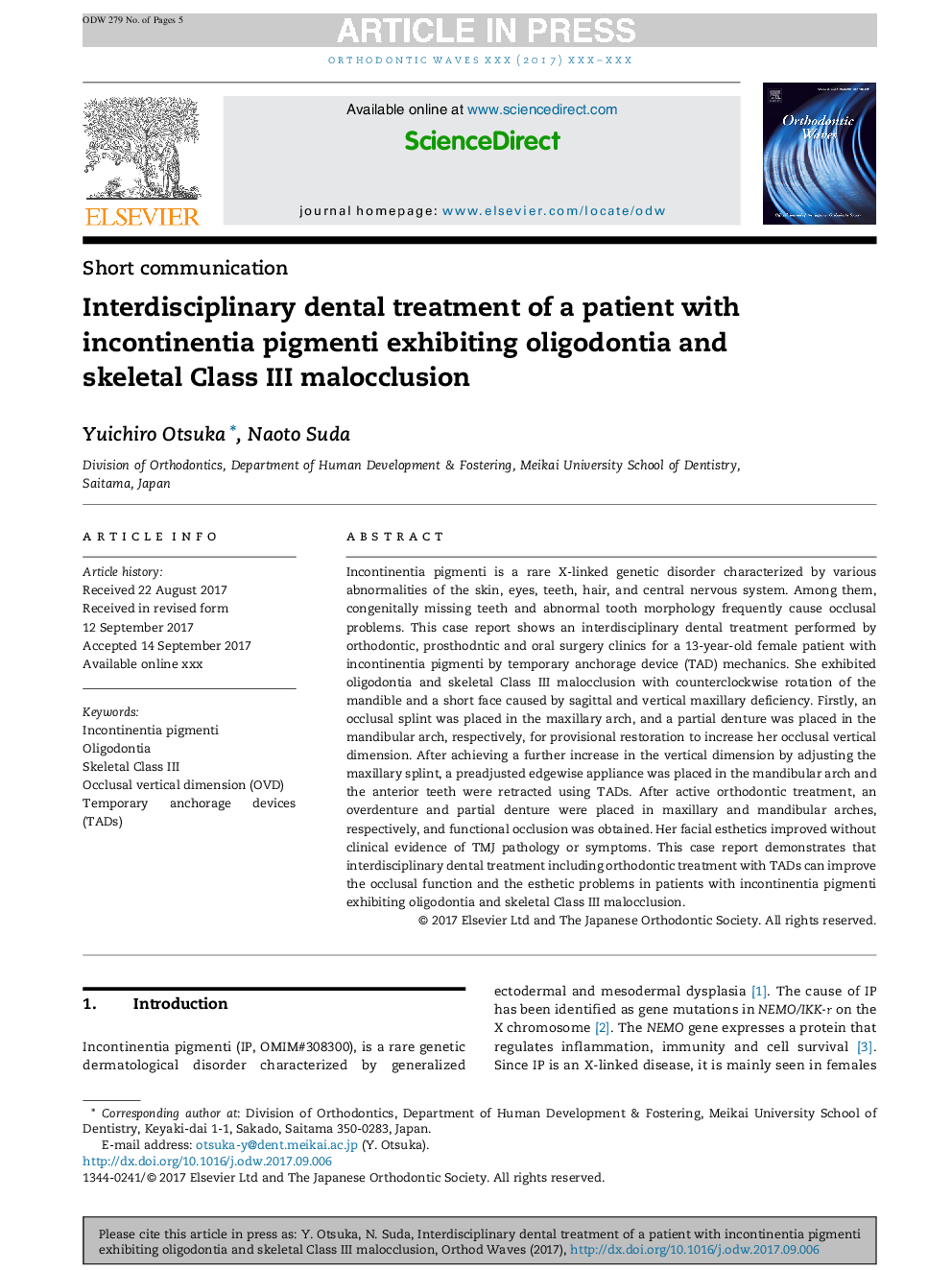| Article ID | Journal | Published Year | Pages | File Type |
|---|---|---|---|---|
| 8707994 | Orthodontic Waves | 2017 | 5 Pages |
Abstract
Incontinentia pigmenti is a rare X-linked genetic disorder characterized by various abnormalities of the skin, eyes, teeth, hair, and central nervous system. Among them, congenitally missing teeth and abnormal tooth morphology frequently cause occlusal problems. This case report shows an interdisciplinary dental treatment performed by orthodontic, prosthodntic and oral surgery clinics for a 13-year-old female patient with incontinentia pigmenti by temporary anchorage device (TAD) mechanics. She exhibited oligodontia and skeletal Class III malocclusion with counterclockwise rotation of the mandible and a short face caused by sagittal and vertical maxillary deficiency. Firstly, an occlusal splint was placed in the maxillary arch, and a partial denture was placed in the mandibular arch, respectively, for provisional restoration to increase her occlusal vertical dimension. After achieving a further increase in the vertical dimension by adjusting the maxillary splint, a preadjusted edgewise appliance was placed in the mandibular arch and the anterior teeth were retracted using TADs. After active orthodontic treatment, an overdenture and partial denture were placed in maxillary and mandibular arches, respectively, and functional occlusion was obtained. Her facial esthetics improved without clinical evidence of TMJ pathology or symptoms.ãThis case report demonstrates that interdisciplinary dental treatment including orthodontic treatment with TADs can improve the occlusal function and the esthetic problems in patients with incontinentia pigmenti exhibiting oligodontia and skeletal Class III malocclusion.
Related Topics
Health Sciences
Medicine and Dentistry
Dentistry, Oral Surgery and Medicine
Authors
Yuichiro Otsuka, Naoto Suda,
